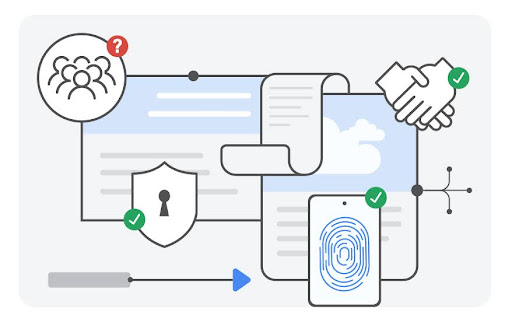
Phishing attacks pose a significant threat to SMBs by targeting employees and exploiting vulnerabilities in their security measures. Phishing is a method where attackers deceive recipients into providing personal or sensitive information.
Despite growing awareness of these risks, many SMBs still fall victim to phishing exploits due to common mistakes in their prevention strategies. In this article, we’ll explore the top three mistakes SMBs make when it comes to Phishing Prevention for SMBs and provide actionable solutions to enhance their cybersecurity defences.
Mistake #1: Lack of Employee Training and Awareness
Phishing attacks often target employees through deceptive emails, messages, or websites designed to trick them into disclosing sensitive information or downloading malicious software. These attacks can bypass traditional security measures and compromise an organisation’s data and systems.
Impact of Successful Phishing Attacks
Statistics reveal that successful phishing attacks can devastate SMBs. They can cause financial losses, reputational damage, and regulatory penalties.
A survey by Cybersecurity Ventures reported that 60% of SMBs go out of business within six months of falling victim to a major phishing scam. This highlights the severe consequences of such attacks.
The rise of remote work has also increased the risk of phishing attacks, as employees working outside secure office networks may be more susceptible.
Examples of Phishing Techniques
Phishing techniques continue to evolve. Attackers now use sophisticated tactics such as spear phishing, pretexting, and social engineering to bypass email filters and antivirus software.
Spear Phishing: Unlike generic phishing, this targets specific individuals within an organisation. Attackers research their targets to create highly personalised messages that mimic trusted sources. This makes spear phishing dangerous because personalised attacks increase the chance of success.
Pretexting: This involves creating a false story or pretext to gain the victim’s trust. Attackers may pretend to confirm a person’s identity, leading victims to share sensitive data. For example, an attacker might impersonate a bank official requesting verification details.
Social Engineering: This manipulates people into breaking security protocols. Attackers use urgency or fear to prompt quick actions such as opening attachments or transferring money. These tactics exploit human psychology more than technology.
By providing in-depth training that covers these techniques, SMBs can arm employees with the knowledge to spot and avoid phishing attacks, protecting sensitive data and systems.
Importance of Employee Training
Employee education plays a crucial role in phishing prevention for SMBs. Staff should know how to recognise suspicious emails and report them properly.
To reduce phishing risks, SMBs must prioritise ongoing employee training and awareness campaigns. Simulated phishing exercises, regular workshops, and promoting a culture of vigilance can empower employees to detect and report phishing attempts effectively.
Mistake #2: Over-Reliance on Technology Solutions
Technology solutions such as email filters and antivirus software are essential, but they are not foolproof. Sophisticated phishing tactics can evade these defences, leading to successful attacks even when tools are in place.
Case Studies of Successful Attacks
Numerous case studies show how attackers have bypassed security systems to execute phishing attacks.
Example: Medibank
In October 2022, Medibank, one of Australia’s largest health insurers, experienced a major cyber incident. Attackers stole credentials from a third-party IT provider and accessed Medibank’s network through a misconfigured firewall.
This breach allowed criminals to obtain and leak sensitive data of 9.7 million customers, including health and personal details. Medibank refused to pay the ransom.
The attack cost the company up to $45 million and caused severe reputational damage. It highlights the importance of monitoring and securing third-party access.
Example: AOL Phishing Attack
In the late 1990s, AOL users became the targets of one of the first major phishing attacks. Cybercriminals tricked users into verifying accounts or confirming billing details via fake AOL messages.
These attacks used algorithms to generate random credit card numbers for fake AOL accounts, which were then used to send spam and conduct more phishing.
This forced AOL to strengthen its security, proving that even early internet systems required robust protections.
Importance of a Multi-Layered Approach
SMBs must adopt a multi-layered approach to security, combining technology with employee training.
Email filtering and anti-phishing tools should be supported by endpoint protection and regular awareness training. Additionally, Multi-Factor Authentication (MFA) is essential. It adds extra verification steps before access is granted, reducing the risk of breaches even when credentials are compromised.
Mistake #3: Failure to Implement Strong Authentication Practices
Weak authentication practices, such as relying only on passwords, make it easier for attackers to gain unauthorised access. Phishing often succeeds because users do not have strong verification measures in place.
Benefits of Multi-Factor Authentication (MFA)
MFA adds an extra layer of security by requiring users to verify their identity through multiple factors. This drastically reduces the risk of unauthorised access and helps limit the impact of phishing attempts.
Practical Tips for Implementing MFA
SMBs should make MFA a priority. Choose reliable authentication factors, educate employees about its importance, and use Identity and Access Management (IAM) solutions for centralised control.
It’s vital to enforce MFA across all departments and prevent staff from disabling it. For best results, use authentication apps like Google Authenticator instead of SMS-based verification, which can be compromised by SIM swapping.
Hardening Security with the Essential Eight
Implementing industry best practices is crucial. The Australian Signals Directorate’s Essential Eight framework helps strengthen defences against phishing.
Configuring robust settings for MFA, email scanning, sandboxing, and regular patching ensures systems remain secure and up to date.
Google Advanced Protection Program
SMBs seeking the highest level of security should consider enrolling in the Google Advanced Protection Program.
This program requires two physical security keys and provides enhanced monitoring for suspicious activity. Remarkably, there have been zero compromised accounts protected under this program, proving its effectiveness.
Conclusion
Phishing attacks pose a serious risk to SMBs. However, organisations can strengthen their defences by addressing common mistakes and taking proactive security measures through effective Phishing Prevention for SMBs strategies.
By prioritising employee training, using a multi-layered defence, and implementing MFA, SMBs can greatly reduce their exposure to phishing threats. Cybersecurity is an ongoing process, and staying vigilant is the key to long-term protection.
Partner with Sentry Cyber for Complete Protection
At Sentry Cyber, we understand the challenges SMBs face in combating sophisticated threats like phishing.
Our comprehensive IT support and security services are designed to help organisations stay ahead of attackers. From training and awareness programs to multi-layered defences and rapid response protocols, we provide everything needed to secure your business.
By partnering with Sentry Cyber, SMBs gain access to our expertise, experience, and commitment to excellence in cybersecurity.
Don’t let phishing compromise your business. Take proactive steps to strengthen your defences with Sentry Cyber today.
Contact us now to learn how we can secure your organisation against phishing and other cyber threats.
